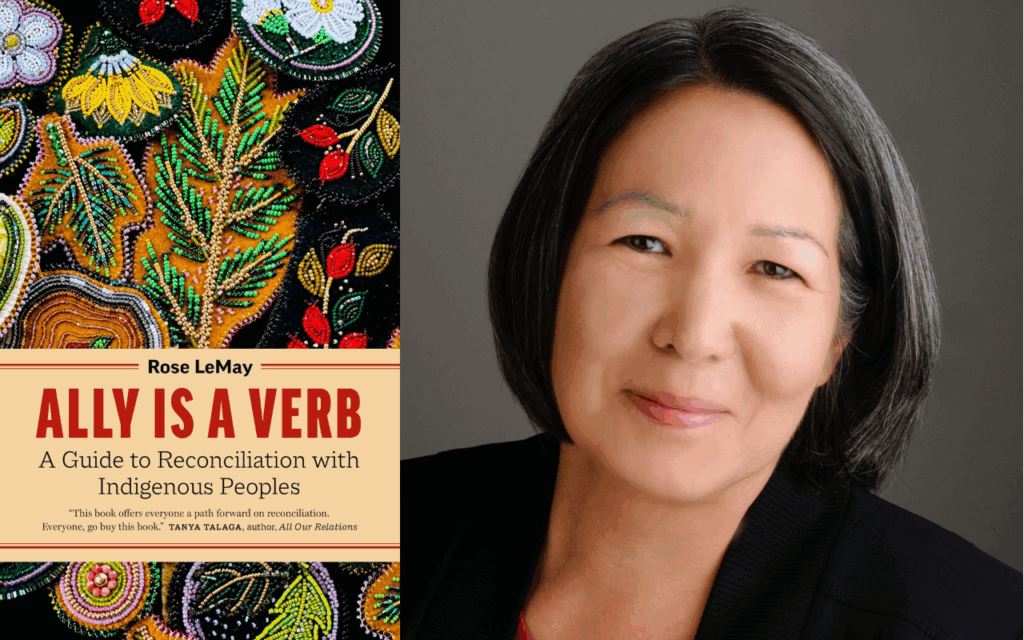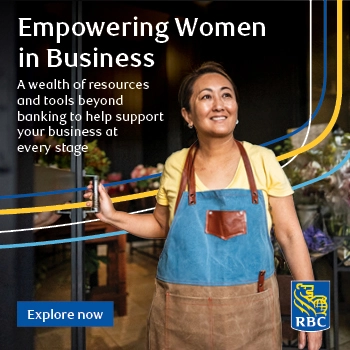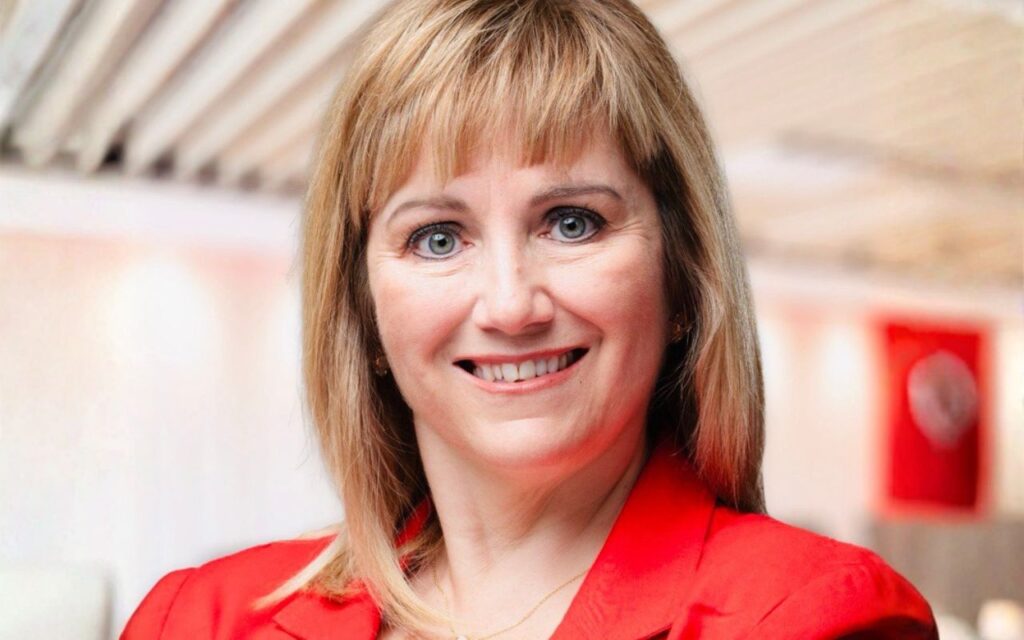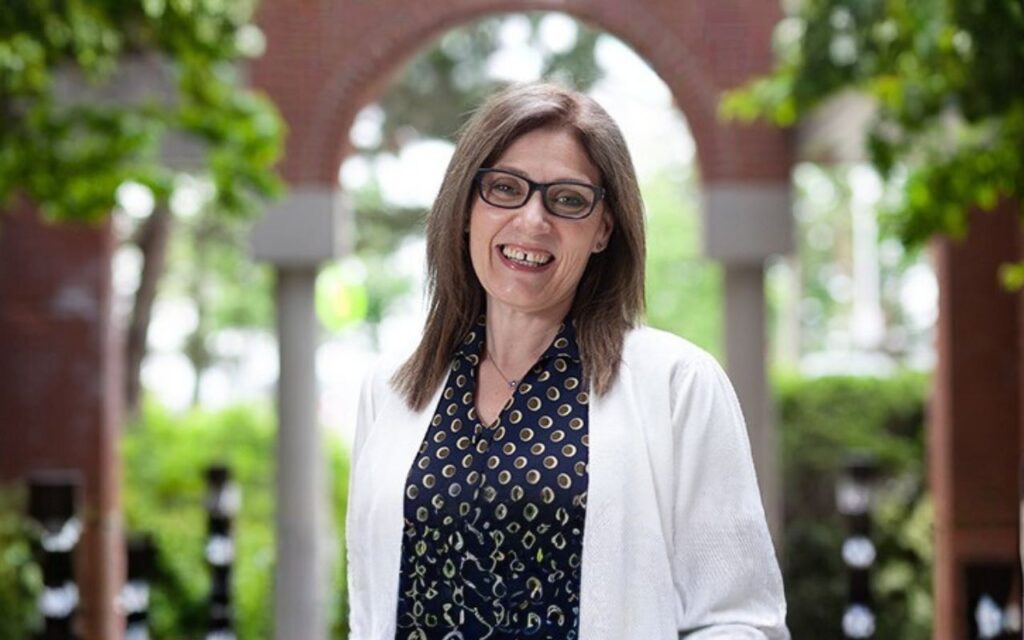
The National Day for Truth and Reconciliation is a moment for Canadians to pause and reflect on our shared history – and to consider what meaningful action looks like in our communities. These conversations can be challenging, but they’re essential for building understanding, connection, and change.
Rose LeMay has been thinking deeply about these conversations, and with her recent book Ally Is a Verb: A Guide to Reconciliation with Indigenous Peoples, she’s providing practical steps to help people navigate reconciliation – whether in everyday life, in the workplace, or within their communities.
We sat down with LeMay to learn more about how we can all step into this work with care, awareness, and hope.
THT: Rose, tell us about your new book – why did you write it?
Rose LeMay: I was constantly asked by allies about reconciliation – people who had learned some history and understood the urgency – What do I do next?
So I wrote the book really to provide a few more potential steps, and I based it on a frame of just four things:
First, I ask allies to be knowledgeable about history so that they can do no harm – to enter these conversations in a way that fosters safety, trust, and a relationship with Indigenous peoples and survivors. That requires some knowledge and the ability to speak about history with compassion. It’s not a debate about whether it really happened.
Second, I encourage allies to undertake internal work to develop cultural competence. It’s about understanding your own culture so you don’t project it onto others.
Third is to combat racism. If we don’t fight racism against Indigenous peoples, reconciliation has no hope.
And last, commit to changing systems. The TRC Calls to Action ask us to reform huge systems, from corrections, where Indigenous peoples make up a large per cent of the population, to health care, which still struggles with racism. Changing systems ensures we don’t leave this work to our kids. We do it now, we change systems, and then we’re done.
THT: I wanted to talk a little bit about timing. Your book came out earlier this year – why was it important to share these lessons now?
Rose LeMay: We need to situate this conversation in the larger disturbing trends we’re seeing in the world. It started in the U.S. with some far-right groups targeting DEI, which is really an appalling lack of inclusion. These are our neighbours, and yet they’re trying to create an us and them mindset, where some people are deemed less worthy of humanity. We’ve been through this before, and sadly, it looks like we’ll have to confront it again.
Canada is uniquely positioned at this moment. We pride ourselves on human rights internationally. Domestically, we haven’t always lived up to that, but we come to this work with the understanding that we’re supposed to do it right. That can give us the strength to actually prove it in our own backyard. And I don’t think governments are going to lead us in this. Most societal change isn’t led by the government – it’s led by community leaders, by sector leaders, and often by women.
THT: Walk me through what that writing process was like – to actually put this together, get your thoughts on paper, and see it come to life.
Rose LeMay: Oh, this is an inside story! So, I write for The Hill Times. I have a column every other week, so I’m used to writing. Usually, the columns where I’m slightly irritable with the world – more targeted, calling out mistakes by certain parties or governments – tend to get the biggest response.
But with the book, I wanted to write in a way that builds a sense of team, not just sparks an emotional reaction. I didn’t want a flash-in-the-pan…people reading an article, reacting, and then moving on. I wanted to build commitment, and that required a very different style of writing.
So I took a lot of time out and actually wrote most of it on the land, while camping. Being among the trees, hearing the water, it slowed me down. It helped me shift into a pace where I could write for commitment, not just reaction.
THT: In the book, you describe how these lessons aren’t just personal ones; that allies can – and should – also think about reconciliation in the workplace. Where’s a good place for people to start if they want to see this happen?
Rose LeMay: First, senior leadership and the board, if there is one, needs to be committed. Reconciliation isn’t incremental or “off the side of your desk.” It can be transformative, like a new strategic plan, and it needs to be funded. These things don’t happen for free.
Second, there needs to be enough literacy and knowledge in your workforce to understand the urgency of reconciliation. And third, there needs to be a practice of anti-racism – a recognition that the workplace has to be safe for everyone. Companies generally also need to hire Indigenous employees. It’s much harder to make meaningful change without having Indigenous voices inside.
To give a sense of sequencing: start with inclusion in your workforce and think about how you serve Indigenous clients, patients, or partners – with excellence, not just “enough.” There are a few more steps along the way, but overall, the goal is to prove that we can have Indigenous inclusion in the workplace. That’s the starting point, and from there, it can broaden into other spheres of life.
THT: If we zoom out, how have you seen conversations around reconciliation change, and where do you think we are on that road right now?
Rose LeMay: Some might say this has been a long road. We started the discussion with the Royal Commission on Aboriginal Peoples in 1991. It didn’t make much of an impact…too early for its time. Then we had the Truth and Reconciliation Commission Calls to Action 10 years ago.
But I don’t think Canada truly entered an authentic era of reconciliation until the announcement from Kamloops and the findings of the 215 children. On that day, the door opened completely. Canadians could no longer pat ourselves on the back with the great Canadian lie – that it really wasn’t that bad. That lie was exposed.
Since then, there have been serious growing pains. But, I think we’re now well underway – so far that we probably can’t undo it. Are we close to done? Not yet. The work still needs more speed and more depth. But we’re far enough along that there’s no going back.
THT: If there is one key message that you hope people do take away from your book, what do you hope that is?
Rose LeMay: Well, I actually have two! My first ask is a big one: stop racism when you see it. If you’re walking down the street and witness an Indigenous child, youth, adult, or family experiencing racism, step in. As an ally, stepping in slows things down and increases safety.
My second ask is to bring hope. We find hope by recognizing the strengths and gifts in each other. That energy, seeing the amazing contributions Indigenous peoples have made to the country, to your region, province, territory, or even your organization, is the motor of reconciliation. Look for those strengths. You will absolutely find them.







